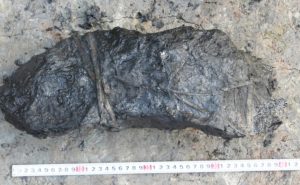Researchers have identified the remains of an large ancient Chinese water management project along the Yangtze River, that dates back 5000 years.

During past four years the researchers have identified the waterworks that surrounded and supported the site known as Liangzhu Ancient City between 5300-4300 years ago. What turns out to be one of the largest water management projects in the ancient world covers an area of over 10000 hectares, and consists of canals, dams, and a system of gates to control movement of the water. Ancient inhabitants of the city, that itself encompassed around 300 hectares, were able to prevent normal flooding and to irrigate crops during dry times with rainwater saved in large reservoirs. They also dug canals to allow small boats to carry people and materials around the area.

The Liangzhu culture was the last Neolithic culture thrived in the Yangtze River Delta of China between 3400–2250 BC. The researchers estimate that it took approximately 3000 people working for eight years just to build one of the larger dams, and in the process, they moved over 280000 cubic metres of dirt. The system was built to fill the needs of a single city, but it did not prevent the sad fate of the system. Around 4200 years ago it suffered from a massive flood which left a meter-thick layer of clay sediment. The city never recovered and the survivors of the Liangzhu culture were forced to migrate.

(after PhysOrg, Bin Liu, Ningyuan Wang, Minghui Chen, Xiaohong Wu, Duowen Mo, Jianguo Liu, Shijin Xu, Yijie Zhuang & Proceedings of the National Academy of Sciences)